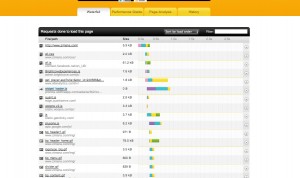No business owner can be an expert at every programming language – nor should they be. The rate of increasing language uses and coding techniques overwhelms even the most experienced programmers.
But a small business owner should have a basic understanding of website functionality. Knowing just a little about how sites can be structured lets small business owners better frame their questions when talking to developers. It also helps organize the effort needed to make corrections and really get things done. The end result is avoiding cost overruns.
A few sites show what the basics are and how those basics work. All do so with a low cost or free resources, and each have a varied degree of expertise. Below are a few with some background on how they work.
Udemy – this site provides presentations and course material from instructors on a number of topics. Many topics teach programming and software usage such as Excel, but there are also some great topics on website dos and don’t. Some courses are free, others have fees of varying prices, with Udemy offer occasional coupons. Regardless of course prices, you’ll find the site worthwhile.
AppSumo – This video-focused site provides online courses, and like Udemy, many are app-related programing and development. But a few also show how to use software. Many courses are offered with an occasional discount and snarky humor. It’s a great site for growing an understanding of how extensive an internet presence maintenance can be.
Webdesigner Depot – This blog shares the latest tricks and ideas from web designers across the world and of varying experience. It a great site in learning a few techniques that can update a site and not just delay
Lynda – There are basic courses available for everything ranging from using Microsoft office to basic programming at $25 per month. These courses contain light material treatment that fits well for beginners and new internet users.
The material in Lynda contrasts with the scope often shown at O’Reilly, which is an excellent resource on programming languages and lessons. O’Reilly, however, aims its courses for more ardent developers. There are certification training programs and webinars, as well as manuals and books that run the gamut of application and database development.
Peachpit – is part of Pearson Publication through its Safari publications. Peachpit provides subscriptions to its video library in addition to specific blogs posts and books sold. It’s pretty similar to O’Reilly, but its audience leans more for creatives, so its more design emphasis that developer audience O’reilly attracts.
YouTube – Type website development or any topic you are researching, and you’ll find a plethora of online video snippets. I discovered a YouTube channel from Adobe that is great for web development. Most designers and developers offer a series of videos, but many have differing quality in terms of speaking style or are using outdated tools, so weigh carefully against curated sites such as Udemy and Webdesigner Depot.
W3C Schools – This site has been the Wikipedia of web design, a standard go-to site for learning the difference between Javascript and Java. Users get to view the results of a code element change to HTML, CSS, PHP, SQL, and plenty of other programming syntax.
Tutorials Point – Similar in layout to W3C Schools, Tutorials Point provides great coverage on PHP, Javascript, Java, MySQL, and other programming languages.
One of the most basic results in an analytics report is search traffic. Yet many small businesses overlook a deeper review that can reveal keyword segments on which customers act to arrive to a target page. One useful pair of keyword segments is called branded and non-branded. These groups are important to determining the quality of your search online.
Branded keyword search is a set of keywords that represent your brand name in a search result. To determine branded keywords, consider what terms are associated with your business. Those terms can include people, such as a popular site contributors, services, products, and even nicknames.
For example, a restaurant owner, Sabrina Johnson, owns Sunset Diner and launches a site. Branded terms can include Sunset Diner, its popular breakfast platter, and maybe the owner if Sabrina is a well known personality.

If Destiny's Child had a new album to promote on a website, Beyonce would certainly be a branded keyword term.
Branded keywords that appear in a search report imply that an audience segment is aware of who you are. Makes sense – otherwise how would website vistors know what word to type? The data represents the mindshare of the searching visitor - he or she recalled the name well enough to type it in the browser. So visitors who arrive to your site through a branded search term are typically highly interested in your offering.
There are some other keep-in-minds that can help your business manage its branding online (and off) through branded search:

Web Optimization Tool Pingdom reveals webpage file loading times as a cascade. This indicates which files are contributing to webpage load time.

Like iconic comic book characters such as Superman, websites need to be updated. Websites are essential software, and updates can impact a site's ability to convey your offering and business objectives
Man of Steel. Many people are familiar with the reference to Superman, let alone the story. The 2013 reboot of Superman on film is proof that even a legendary character needs to be reimagined to rekindle interest.
Websites also need to be "reimagined" or updated. Part of the process can begin with how pages are loaded into a website. This means developing an optimization process to improve how your website appears to potential customers in their browsers. The time require to load a page, dictated by the volume of calls to the website server, is crucial to site performance.
Page load service Yottaa, for example, discovered in its analysis that a 1 second delay in page load speed can lead to a 7% decline in conversion – that means lower sales online for digital retailers, lower leads from online contact form, or lower signups for events. A 1 second delay can also mean 16% lower customer satisfaction.
The answer to this performance is page load optimization. Page load optimization, just like web analytics solutions, started as a diagnostic activity of website performance. More recently, people who arrive to a website are increasingly doing so through a mobile device. This has made fast page loads an essential quality for purchasing online and reviewing site content. Mobile devices vary in capability, which means the coding parameters for loading a webpage must fit for the devices with the least capability – no detection of flash or javascript on a sight for example.
There are a number of page load optimization tools available. Two page load optimization tools, Yottaa and Pingdom, provide a terrific framework for indicating website segments on which a changing performance has occurred.
Yottaa is an online service. It loads a user’s website from various servers all over the world. It then returns a report that explains how the site performed. This can seem like a lot for a site meant to attract local traffic, but it does provide some advantages if a business is looing to expand Yottaa is powered by mongoDB. The usage for online page load measurement means more flexibility in examining the data. The tool tracks 6,000 websites with up to 300 samples/URL/day.
Pingdom differs slightly from Yottaa. It also analyzes a site, featuring a waterfall graph that can indicate which elements are taking a long time to load. Pingdom also offers a website monitoring service – it provides text alerts if a site is down, for example.
Both Pingdom and Yottaa make page load verification easy and instructive – I particularly liked Pingdom’s waterfall reporting. With website complexity increasing, development must now optimize page code to load in many devices and browsers.
Packet sniffers – software that verify calls to a website host server – can also aid website performance testing. Two popular software are Charles and Fiddler.
Finally, developers have offered Chrome and Firefox plugins such as:
All have page load measurement tools, though not as advanced as Charles and Fiddler in terms of verification. Yet, SEOquake has features such as degree of severity in its reports, allowing the user to determine and group issues as needed.
All of these page load optimization tools are well poised to help small businesses link nuanced information about website performance to their objectives.
This infographic is informative, but for many reasons beyond the graphics and information given. App development, like much of any software development takes time to refine. And like many engineered products, the effort can become convoluted quickly. But the key is developing reasonable steps along the way. Here is a roadmap for what reasonable steps should be expected.
Reviewing analytics data is essential for discovering the next steps for marketing your business online. The review can save time and money deciding on site redesign decisions and how your business markets itself online. Yet sometimes understanding meaningful data beyond website “hits” is not instantly clear.
If you find your analysis is not clear, try reviewing the traffic sources report for initial ideas. Monitoring traffic sources can benefit your overall business by measuring how well your exposure online is doing, and which could be strengthened. To get started, take a look at each traffic source, and its potential value to your business decisions.
Direct Traffic represents the visitors who arrived to your site directly, either by typing the URL or by bookmarking the site. Consider this data as the health of your site “brand” – someone saw the URL and decided to act.
What is the Value to My Business: Direct traffic visitors are typically the visitors most interested in your site, because they saw your URL and chose to visit your site rather than clicking a link or an ad. If someone typed Zimana.com, their interest in typing the URL means they were interested in learning more about the site.
To gain a better sense of where your interested visitors are, filter other reports with only direct traffic, such as examining direct traffic in the geolocation report. Combinations can reveal where to tailor your marketing towards the most interested clients or customers. So if you are consistently seeing traffic from Indiana and your business is based in Chicago, chances are your Indiana traffic is seeing the URL somewhere – from trade show appearances to ads – and choosing to directly view the site.
You can also review content pages filter through direct traffic to discern which are attracting direct visitors. You can then decide how to augment that content – from related articles to sales campaign for a product.
Referral Traffic are visits from sites linked to your website. Let’s say, for example, your business team regularly participates in forums on Linked In or have posted images related to your blog in Pinterest. The traffic source reports would reflect traffic that arrives from these sites.
What Is The Value to My Business: If your marketing includes online community participation, posting articles on a partner site, or using social media, referral traffic reports will reveal the amount of traffic coming from those sites. Doing so helps to understand the return on your involvement, be it your time or membership fee. leads into online customers or sales leads for your own website.
Search Traffic is, of course, the traffic arrivals via search engines. The basic report can be helpful if you are trying to decide which search engine may need more exposure. A paid search campaign would be one idea.
What Is The Value To My Business: The value is helping to decide which search terms are working organically for your site. You can build on top of the content development or decide which words would be better served through paid search ads. You can also compare branded terms – words that contain your brand – against non-branded terms. For example, for an automotive brand like Chevrolet, the nickname “Chevy” and vehicles such as “Impala”, “Cruze”, “Malibu”, “Camaro” and “Corvette” would be branded terms. Generic nouns
Every website has a different mix of traffic sources – a blog with a consistent posting schedule will probably generate more search than a B2B site. Ultimately your business should weigh its marketing effort against each source, and see the metrics each source contributes. Traffic from search may have higher engagement metric (average time on site and pageviews) that the time spent in online communities generating traffic. And you’ll begin to see which efforts are working for you.
In the race to improve analytic capability in companies, marketing teams can sometimes overlook the technical elements make analytics work. Thus incorporating analytics tags early in a digital marketing plan can reveal the tasks most relevant to business objectives and more vital than launch tactics.
If your marketing team struggles with vetting tags, they are not alone. Agencies are encountering new challenges for implementing client-server tagging. But tag usage is certainly not abating. In fact the number of web tag types used by agencies and businesses surged 53% in 2012 according to Adage. A revealing statistic: While 45% of tags were applied directly by the publisher, the rest came from other sources. Thus control over where data is being captured is an increasing concern. Privacy issues occur if left unchecked.
Early consideration of analytic tag placement can reveal potential security hiccups. It can also bring forth productive talks and tasks. In one instance, it can educate non-technical managers on the technical aspects to a digital marketing campaign launch. Many professionals have adopted computer usage, but not every professional understands client-server technicalities and programming that belies a digital ad or social share. A tag evaluation can help managers see what needs to be checked, and see how changes in data usage and associated code can aid business decisions.
Second, early tag implementation can lead to better refinement of a company’s website measurement against current digital trends. For example, most professionals can appreciate that data can appear at client-side and server-side, but apps in mobile and tablets have created new functionality for client-side data. This means planners must express content and associated tags to accommodate different screens, to balance customer activity on varied devices, and to capture metrics that reflect business objectives.
Third, early tag implementation organizes measurement complexity, easily highlighting needed skills or processes. For example, a team can achieve good tag quality assurance with an appreciation of client-server interaction. Verifying tag functionality does not require a deep knowledge of machine language, but translating business objectives to a website requires an imagination of where tags can be placed and which metrics are best recorded.
With early incorporations of tags, the good news is that many agencies are learning better ways to manage the teams involved. I learned about one such discovery while attending an Ogilvy and Mather presentation in their Chicago office. Benjamin Hong, Director, Marketing Analytics and Mike Armstrong, Technology Director explained the tag process to the Chicago HTML5 Meetup audience, a group of web developers. The fact that this presentation addressed developers highlights the ideas that it’s never too early to talk about tagging concerns, even with a website wireframe.
As you can imagine, gathering tag requirements for an analytic practice best starts with a holistic viewpoint from designer, developer and marketers. Doing so surfaces the reasons for why tagging is being requested in the first place. “We need to talk about web analytics as analytics – what is the relationship between the things we do and what our outcomes are, “ explained Hong in the presentation. “We may be given an assignment without really being given the outcome. Analytics focuses on behaviors caused by the activities that drove behavior.”
Understanding how to best translate marketing activity to URL queries is clearly valuable to any tag evaluation. And given the volume of media channels and publishers using tags, such translation has become prime real estate in a digital marketing neighborhood.